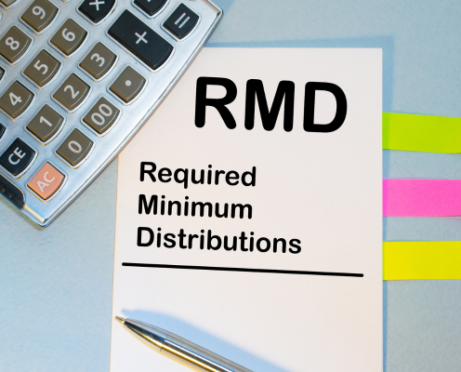
The SECURE Act, which stands for Setting Every Community Up for Retirement Enhancement, offers new investment opportunities for high-net-worth individuals. With annuities made more accessible in 401(k)s and other defined contribution plans, there is a new level of safety in retirement planning. As a team passionate about finance and aiding high net worth individuals, this has been an exciting development for us.
As a high net worth individual – your investable assets are at least $1.0 million – you may not be familiar with the benefits of annuities, which can provide a guaranteed income for life, even as traditional retirement plans become increasingly rare. With the new opportunities created by the SECURE Act, annuities can provide a safe and stable income source throughout your retirement, ensuring long-term financial security.
It's important to note that while annuities can be a valuable component of a retirement plan, they shouldn't necessarily make up the entirety of your investment portfolio. According to some financial experts, a general rule of thumb is to allocate no more than 50% of your total wealth to annuities. However, this can vary based on individual circumstances and risk tolerance. .
In a way annuities are kind of a big deal. Think guaranteed income for life, even when traditional pension plans are becoming scarce. With the SECURE Act, annuities have become a hot topic for high-net-worth folks who want to be proactive about their financial stability later in life. And with the new safe harbor protection, annuities are definitely worth considering for your retirement plan.
What Is an Annuity?
Annuities have a long history, tracing back to Roman times, and have been accessible to the American public since 1812. High net worth individuals (HNWIs) often look for diverse financial tools to protect and grow their wealth, and annuities can be a strategic addition to their portfolios. As a financial instrument, annuities provide a reliable income stream, akin to a pension, and are typically issued by insurance companies in the U.S.
For HNWIs, the appeal of annuities lies in their potential for tax-deferred growth and income security. In exchange for a lump sum, you can purchase a stream of payments. These payments can be immediate or deferred, depending on your financial goals and retirement timeline. As of 2021, there were approximately 2.9 million HNWIs in the United States, with a combined wealth of $10.2 trillion. For these individuals, annuities can offer additional diversification and risk management within their investment portfolios.
Moreover, annuities can provide a hedge against longevity risk, which is the risk of outliving one's assets. Given that HNWIs generally have a higher life expectancy, annuities can ensure a consistent income stream throughout their later years, regardless of market fluctuations. Furthermore, annuities can also provide a legacy for their heirs, with some contracts including death benefits or options to transfer the remaining value of the annuity upon the annuitant's death.
As a contract issued by an insurance company, it has costs. Since it has costs and gains no additional tax advantage when placed into a tax-deferred plan, many advisors have steered clients away from using annuities in these plans.
Others, however, use them nearly exclusively. Both sides consider the other as not acting in the best interest of their client. It’s one of the big controversial topics among advisors. Let’s dig into the details and see what the real story is.
More Basics
So, you're probably familiar with the fact that an insurance company issues a contract called an annuity. You have two options: an immediate annuity which provides payment right away or a deferred annuity where payments come later. Now, the specifics of when and how payments are made aren't exactly defined up-front, but you do have some flexibility in how it all works.
You can purchase an annuity outside of a retirement plan. This would be a non-qualified annuity. You have a tax basis equal to the sum of your contributions. Or you can purchase an annuity within a qualified plan or IRA. Here you will generally have no cost basis. Either way you have tax deferral, although with a qualified annuity you would have it without using the annuity. To be sure, an annuity, when placed inside of a retirement plan, that tax deferral is redundant; you gain no additional tax advantage.
Annuities can also be classified as fixed or variable. Fixed annuities pay an interest rate, typically referred to as a market rate because it is tied to an index. There is also usually a floor — a rate below which the interest rate cannot fall. The rate resets at specific intervals; it doesn’t fluctuate from day to day.
Variable annuities have investment options, and for practical purposes work a lot like a typical 401(k) in which you have a variety of different investment options to choose from. We’ll come back to this later.
Annuitant, Owner, and Beneficiary
An annuity provides a lifetime income to someone, which is typically based on that same person's life. This person is called the annuitant and they may or may not also be the owner of the annuity.
While the owner has contract rights and gets paid during their lifetime, if they pass away before the annuitant, payments will continue to be made to the latter. And any remaining principal or payments will be paid to the beneficiary.
Remember, the beneficiary can be changed by the owner, but the annuitant cannot. So, if you're building retirement assets within a retirement plan, you'll be both the owner and annuitant, giving you the freedom to choose whomever you like as your beneficiary!
Taxation of Annuities
Okay, let’s break this down into two pieces for you. First, let's talk about qualified annuities in a retirement plan. With a qualified annuity, your taxes are the same as with the plan. So, having an annuity doesn't give you extra tax deferral – you already have it because of the plan.
Any money you remove from the plan is subject to tax rules as you’re likely familiar with. Removing money from the annuity wouldn’t be a taxable event if the money stays within the qualified plan.
This is important. You could have money in an annuity within a 401(k) and at some point, move it to another investment and not have tax consequences.
You must be careful about other charges, see the costs section that follows. You could also move money from a different investment within the qualified plan into the annuity with no tax consequences. Your tax ramifications are the ramifications of the plan containing the annuity. There’s nothing additional or new.
For a non-qualified annuity, it’s completely different. You make contributions in after-tax dollars and build a tax basis of those contributions. You get tax deferral; your growth isn’t subject to taxation until you take the money out.
For contracts issued today — and any since August 14, 1982 — funds come out on a last-in-first-out (LIFO) basis. Basically, this means if you make a partial withdrawal, you will take the growth before you take any contributions. Growth hasn’t yet been taxed, your contributions have.
You must take the taxable amount before you can get to the money you can get back without tax. This will be different if you’re taking a stream of income; this is for a lump sum withdrawal, partial or full.
But keep in mind that for annuities within qualified plans there’s nothing complex, nothing new taxwise.
And for any of the annuities, whether qualified or not, you have the IRS at hand for tax and a premature distribution penalty if you are tapping in before age 59½, with some minor exceptions.
Costs of Annuities
Here’s the downside to annuities. They cost a lot. You may also get a lot, but it’s not cheap. Here are the typical costs associated with a variable annuity:
- Contract Charge: typically, an annual charge, applied monthly to the account; this is an administrative fee.
- Mortality and Expense (M&E) charges: a cost for the insurance component of the annuity, protecting that your payments can be made even as people continue to live longer, etc.
- Investment management fees: like the charges you would incur investing in a mutual fund. Annuities use sub accounts that work for all practical purposes like a mutual fund but are within the annuity. Management fees apply to all the variable accounts, not the fixed account.
- Surrender charges, or a sales charge: Annuities typically have a declining surrender charge that eventually disappears. In many cases you won’t incur this charge, but you need to know it’s there.
- Rider fees: apply to any special riders or other optional benefits associated with the contract.
When you purchase a fixed annuity, you don’t see most fees; they aren’t unbundled. For a fixed annuity, the fees are embedded in the contract.
Guarantees and Other Options
If costs are the downside, here’s the counterbalance: An annuity is designed to be an investment you cannot outlive. If you annuitize an annuity, that is, turn it into a stream of payments, most payment options provide you with a guaranteed income for your life no matter how long you live. Guaranteed.
With people generally being underfunded in their retirements and living longer and longer, this is huge.
This is the reason those financial advisors who advocate using annuities advocate so strongly for them. They can provide an income you cannot outlive. You can set yourself up to always have money coming in.
There can be other guarantees as well, with some newer options gaining traction. Some annuities provide floors to your investment returns or to prevent losses on their variable investments.
Typically, this is done where you receive a percentage of the upside, but not less than some minimum. You pay a premium for this; it is one of those riders for which you pay extra. It’s not available on all annuities. And the specifics of participation and costs vary from company to company and contract to contract.
Payout Options
When it comes time to take money from your account you have several options. Here are the basics:
- Lump sum: You have the option to take a lump-sum payout. This would get you all the money at once, but it’s probably a bad idea. You’re going to have all the tax consequences at once.
- Interest only: You can withdraw just the interest and leave the principal intact. This could be done to provide you with a little extra income on top of other incomes. You could switch to a different method later if your needs change.
- Period certain: A period certain payout is an annuitization of the contract that is based on a set number of years instead of on your life expectancy. For example, you might want a 10-year certain to use early in retirement, leaving other investments for later. At the end of the period, you would have nothing left, the annuity would be done. You exchange your principal for the stream of payments. Once elected, this election is irrevocable; you can’t change it.
- Life certain: A life certain payout is a payout based on your life expectancy. It may or may not also have a guaranteed period. It could, for example, pay for your life but not less than 20 years. Any guaranteed period will reduce the payout, there’s a cost involved. This election is also irrevocable; once you’ve annuitized the contract you can’t undo it.
The Bottom Line on Annuities
Our quick little overview isn’t exactly quick or little, but it is just an overview.
Annuities are complex investment vehicles —they have a lot of costs, higher than other investment vehicles that may do similar things.
But nothing, no matter how similar, is the same. Annuities have the option to provide you with guarantees you cannot get outside of an annuity. They’re fiercely advocated for by some advisors because those advisors feel strongly about those guarantees and how they can help you in your retirement.
The never-annuity crowd of advisors can also make a solid case. During your accumulation years, using an annuity within a tax deferred account costs you money for something you’re getting anyway. Note that in some cases you may also be able to have additional guarantees during your accumulation years, but not always.
The never-annuity advisors advocate building your wealth without using an annuity, as you could always purchase one at the time of retirement if you need or want the guaranteed payout option.
Both the pro-annuity and never-annuity camps can make a solid argument. But that doesn’t really matter. What matters is that if you’re considering an annuity, you understand how it works and what you are getting in exchange for what you’re paying. And that knowing that, you make the decision that’s best for you.
Other people can believe whatever they want. Their money, their choice. You just do what’s best for you.
This article's view is the author's and does not reflect the opinion of any member of CentSai's management. The author is not being paid by any financial services company nor has been paid to promote any individual product or service. The author is not a financial advisor or a broker-dealer. The content above is education-only and any reader is encouraged to seek advice from a registered financial advisor before taking any action.










